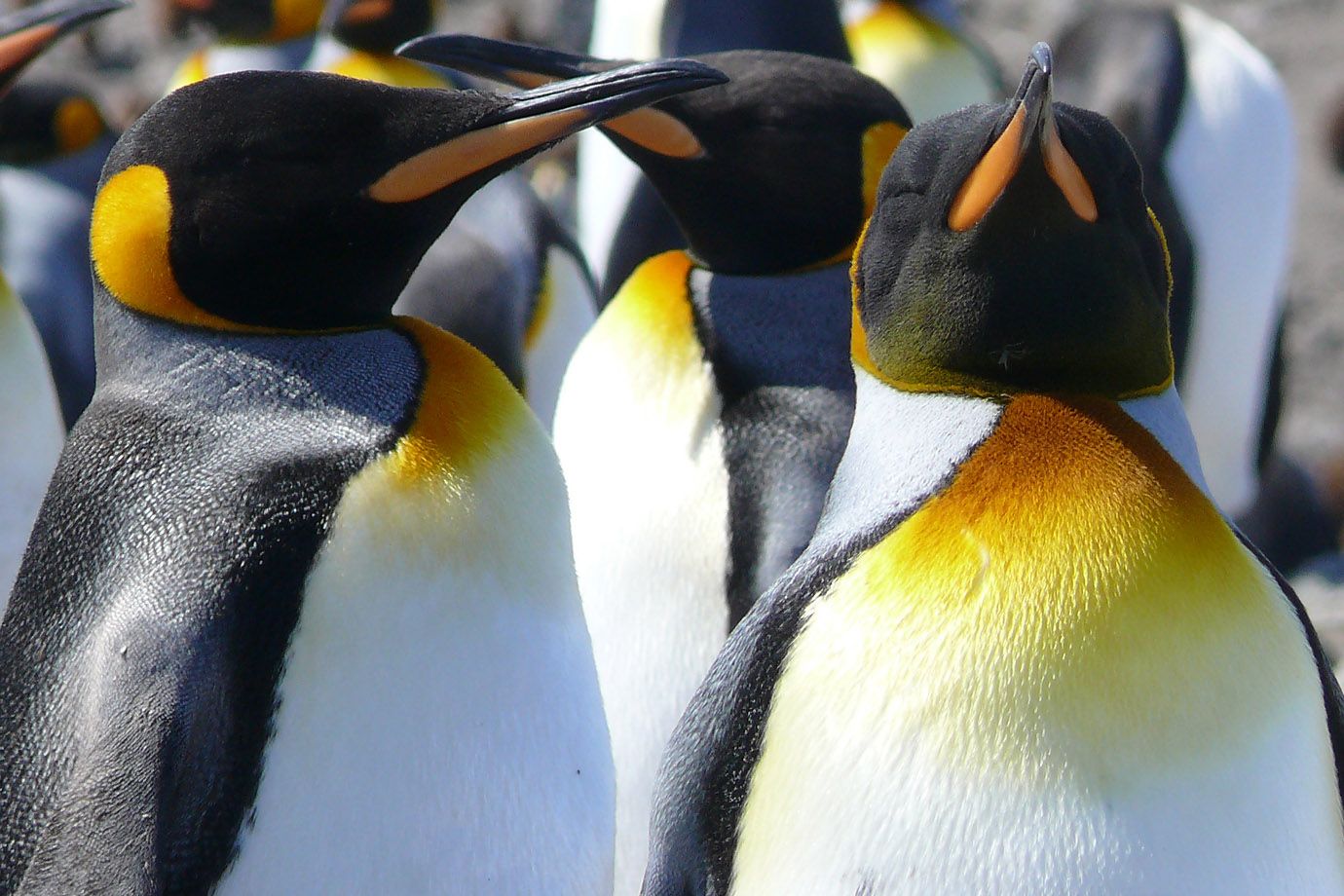
King Penguin
The King Penguin (Aptenodytes patagonicus) is the second largest species of penguin, second only to the Emperor Penguin.
King Penguins breed on the subantarctic islands at the northern reaches of Antarctica, South Georgia, and other temperate islands of the region. The total population is estimated to be 2.23 million pairs and is increasing.
King penguins have adapted well to their extreme living conditions in the subantarctic. To keep warm, the penguins have four layers of feathering. King Penguins have 70 feathers per every square inch. The outer layer of feathers are oiled and waterproof, unlike the feathering of a duck, which reduces to the amount of water absorbed that would otherwise increase their weight. The inner three layers are down feathers, very effective insulation. A chick is born without the oily outer layer, and therefore cannot fish until maturity. A King Penguin chick has a dark coloration of downy feathers. They remain on land and do not go into the water until their down feathers have fallen off.
Like most penguins, the King Penguin is able to drink salt water because of their supraorbital gland which filters excess salt from their blood stream by way of a capillary just above the penguin's eyes.
Source: en.wikipedia.org/wiki/King_Penguin - 04.10.2010
King Penguins
Maybe they look so snobbish, because we call them King Penguins.







